Marimo Moss Balls: A Unique Aquarium Addition
Marimo moss balls, often referred to as “marimo moss balls care” in the aquarium world, are fascinating and low-maintenance additions to any tank. Despite their name, they are not moss but a type of green algae called Aegagropila linnaei. Their velvety texture, spherical shape, and slow growth make them a popular choice for aquarists. However, recent regulations in the US have impacted their availability due to concerns about invasive species like zebra mussels.
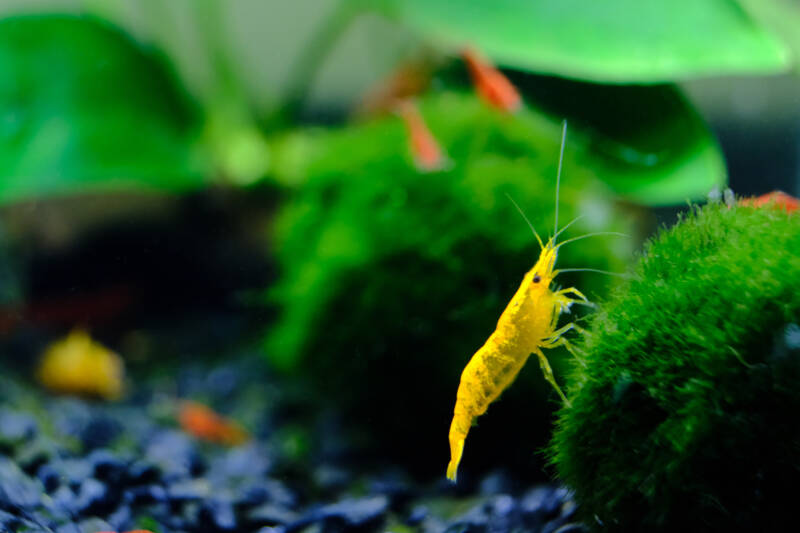
Are Marimo Moss Balls Safe to Buy?
As of February 2021, the US Fish and Wildlife Service advises against purchasing marimo moss balls. If you’ve bought any after this date, they recommend destroying and disposing of them properly to prevent the spread of zebra mussels, an invasive species that can harm natural waterways.
Detailed instructions are available on their website, and you should ensure your disposal method complies with local laws.
Zebra mussels, first detected in contaminated moss balls in a Seattle pet store in March 2021, are aggressively invasive. The US Geological Survey (USGS) tracks reports of contaminated moss balls in their Nonindigenous Aquatic Species database. Several states have issued quarantines to protect uncontaminated waterways.
Stay updated on the US Fish and Wildlife Service website for when it will be safe to purchase marimo moss balls again.

Marimo Moss Balls in the Wild
Marimo moss balls form large colonies in Japan’s Lake Akan and some European lakes. Japan considers them a natural monument, and they are listed as threatened in several countries due to their limited geographic range. The name “marimo” translates to “lake ball,” reflecting their spherical shape formed by lake currents rolling algae filaments on the lake floor.
In deeper, calmer parts of lakes, marimos grow as flattened mats or clumps covering rocks and the lakebed. Interestingly, most marimo moss balls sold in the aquarium trade come from Ukraine, not their native habitats, as harvesting them from the wild is prohibited.
Marimos form massive colonies in Japan’s Lake Akan and throughout lakes in Europe.
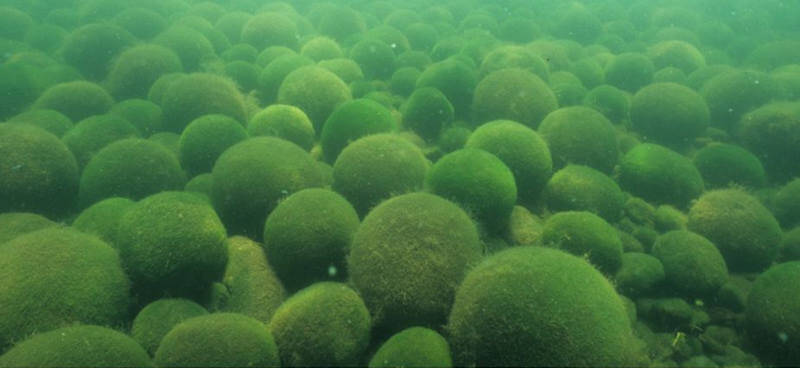
Because of their limited geographic range, Japan considers them a natural monument, and they’re listed as threatened in several countries.
Marimo translates to “lake ball” in English – a fitting name since they’re literally giant balls of algae filaments found on lake floors.
Currents in shallower parts of the lake roll them around, giving them their iconic shape.
The spherical colonies are usually comprised of a few layers and can grow up to 12” (30 cm) in diameter.
Wild colonies that form in the deeper, calmer parts of the lake form flattened algae mats and clumps which cover rocks and patches of the lake floor.
The moss balls available in the aquarium trade aren’t harvested directly from these colonies, though, as they’re a protected species in most of their native ranges.
In fact, most of the marimo moss available on the market today come from Ukraine. Even the ones available for sale in Japan have European origins.
All the suppliers, growers, and wholesalers surveyed in a 2010 study reported Ukraine as their stock’s country of origin.
Caring for Marimo Moss Balls
Overview
- Light: Low light
- Maintenance: Low
- Growth: Slow
- Temperature: Prefers 65-75°F (18-24°C), tolerates up to 85°F (29°C)
- Water: Requires dechlorinated water
Marimo moss balls are perfect for beginners and experienced aquarists alike. They thrive in low-light tanks and tolerate a wide temperature range. Their slow growth—about 0.2 inches (5 mm) per year—makes them ideal for small containers like fishbowls, jars, or vases, as well as larger aquariums.
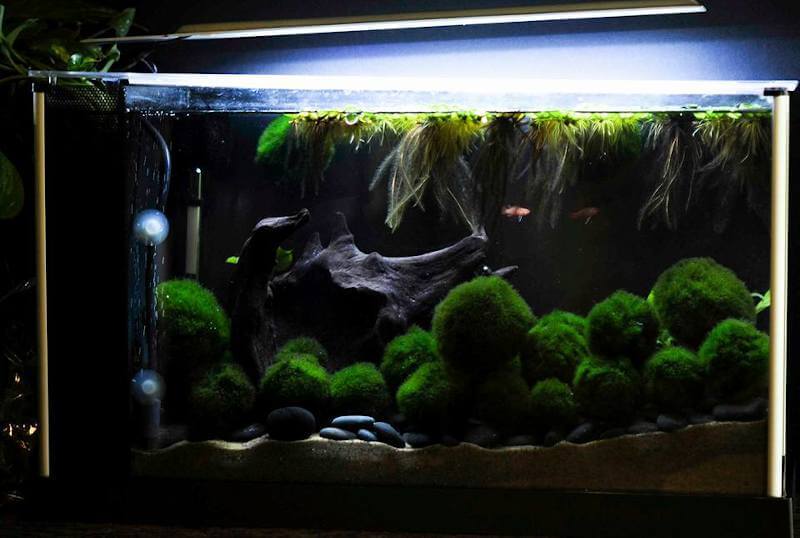
Maintenance Tips
- Clean them during water changes by rinsing under tap water or swishing in a bowl.
- Roll them in your hands to maintain their shape and prevent dead spots.
- Perform water changes every 2-3 weeks for single-species tanks.
Helpful Tips
- Avoid direct sunlight to prevent burning.
- Use dechlorinated water and maintain a regular water change schedule.
- Leave containers open for better gas exchange.
- Refrigerate moss balls occasionally to mimic their natural cold-water habitat.
- Have fun decorating and naming your marimo tank!

Choosing a Healthy Marimo Moss Ball
When selecting a marimo moss ball, look for:
- Deep or bright green color
- No brown or yellow spots
- Consistent texture throughout
- Round or slightly roundish shape
- Velvety or fluffy appearance
In-Store Purchases
Check for firmness and avoid moss balls that feel squishy or have an off smell, as these may be rotting inside.
Online Purchases
Buy from reputable sellers like AquaticArts.com or PlantsForPets.com. Read reviews and check shipping conditions to ensure your moss balls arrive healthy.
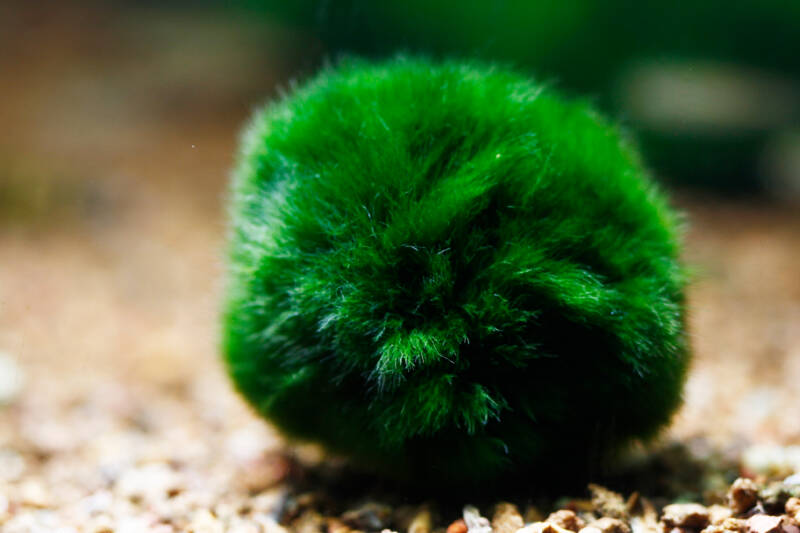
Introducing Marimo Moss Balls to Your Tank
Before adding a marimo moss ball to your aquarium:
- Rinse it under tap water to remove debris.
- Soak it in dechlorinated water.
- Check for hitchhikers like snails or eggs. If needed, use a bleach dip (1 part bleach to 19 parts water) for 1-2 minutes, then rinse thoroughly and soak in dechlorinated water.
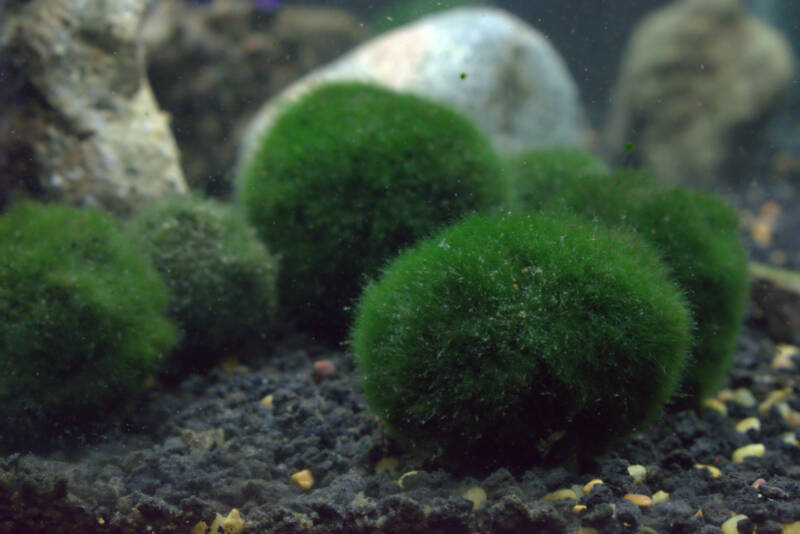
Tank Mates for Marimo Moss Balls
Marimo moss balls pair well with:
- Betta Fish: Bettas often rest on them without causing damage.
- Goldfish, Axolotls, and Turtles: These animals may roll or play with the moss balls, but some may damage them.
- Shrimp and Snails: Marimos provide grazing surfaces and collect food debris, making them ideal for invertebrate tanks.
- Other Fish: They thrive in tanks with non-aggressive fish.
Online

Common Marimo Moss Ball Issues
Floating Marimos
Marimos may float due to oxygen bubbles produced during photosynthesis. Gently squeeze them underwater to release trapped air and help them sink.
Propagating Marimos
You can propagate marimos by:
- Splitting: Divide a moss ball in half and reshape each piece.
- Pinching: Remove small buds and roll them into new moss balls.
Falling Apart or Discolored Marimos
If your marimo is falling apart or has brown spots:
- Remove unhealthy parts and reshape the remaining algae.
- Use fishing line or thread to hold it together.
- Increase water changes and provide occasional salt baths to revive discolored areas.
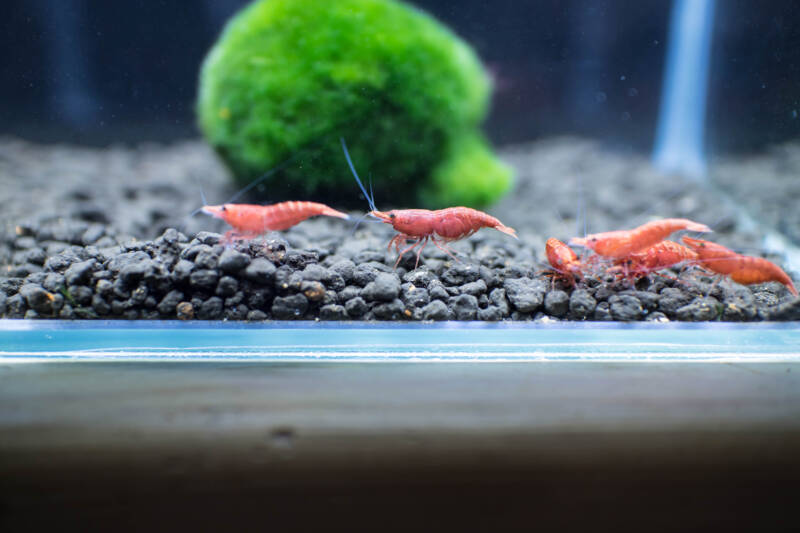
Personally, I recommend buying from AquaticArts.com or PlantsForPets.com (both are run by the same company, their product is pictured above).
Their prices are fair, and they usually throw one or two extras to cover any that may have been damaged or died in transit.
You can also find the Aquatic Arts brand on Amazon if you’re a fan of Amazon Prime.
The other company I recommend purchasing from is Luffy, which is accessible through Amazon as well.
Generally, I’ll purchase mini marimo balls (under an inch) from Luffy and larger ones through Aquatic Arts.
I’ve ordered from both multiple times and haven’t had any issues with either company thus far.
The last thing to consider when purchasing online is shipping. If temperatures are over 85-90°F (29-32°C) or under 55 °F (13°C) where you live, make sure to keep an eye on your shipment’s tracking.
Most websites give warnings about shipping time and temperature, but I’d hate for you to make the same rookie mistake I did.
The first time I ordered moss balls, I didn’t think about them being delivered and then sitting in a 120°F metal mailbox all day.
When I finally came home and opened their package, let’s just say they didn’t look so great. Some of them were beyond saving, but a few survived after some TLC and spa nights in the fridge.
Introducing your marimo moss to its new home
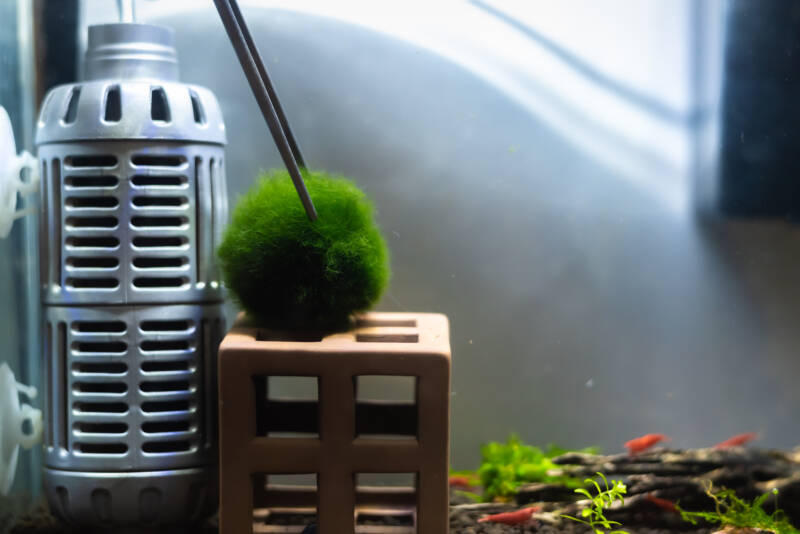
Before placing your marimo ball into its new freshwater aquarium home, you’ll need to give it a good once-over to check for hitchhikers (see What’s on My Marimo Ball? for more information).
You’ll also need to give it a good rinse and soak! Rinse it under running tap water or swish it around in a bowl of clean tap water until you don’t see any debris or sand and the water runs clear.
Reroll them with your hands and let them soak in clean, dechlorinated water before adding them to the new tank.
Tank Mates
Betta Fish
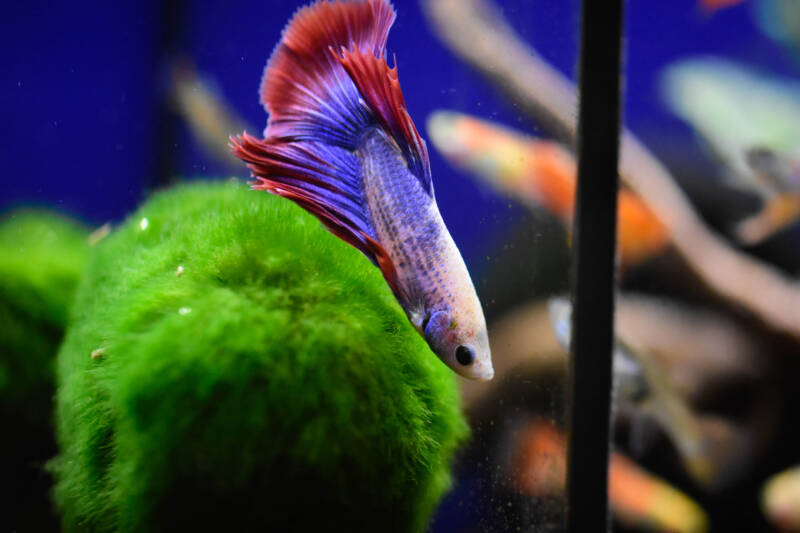
Bettas will often stop to rest on these fluffy green moss balls but won’t damage them. They make fantastic betta tank mates!
Goldfish, Axolotls, and Turtles
There are pros and cons when it comes to housing marimo moss balls with goldfish, axolotls, or turtles.
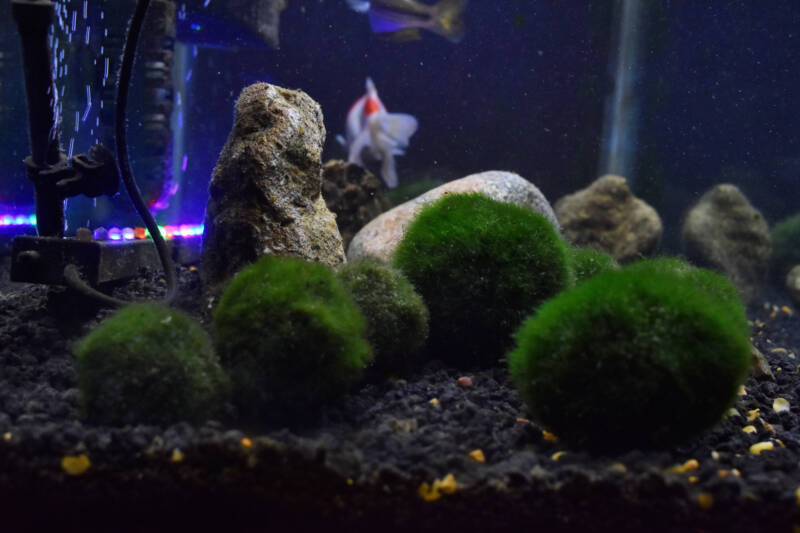
Both goldfish and axolotls prefer cooler water just like moss balls, which is a plus. Marimo balls also pair well with goldfish and freshwater turtles, who can roll them around and play with them (beneficial to the moss and the animal!).
Some goldfish will pick at them, some might leave them alone, and others will completely destroy them. The same generally applies to axolotls and turtles.
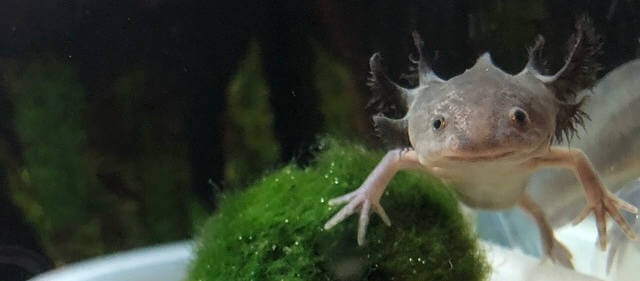
Because of the way axolotls quickly suck in prey, they may choke on smaller marimos or bits of larger marimo balls.
If your animal is breaking apart your moss balls, it may be best to remove them from the fish tank for the safety of your animal and the well-being of the algae.
Crayfish
Crayfish are notorious for tearing up aquarium plants and redecorating their tanks to suit their liking.
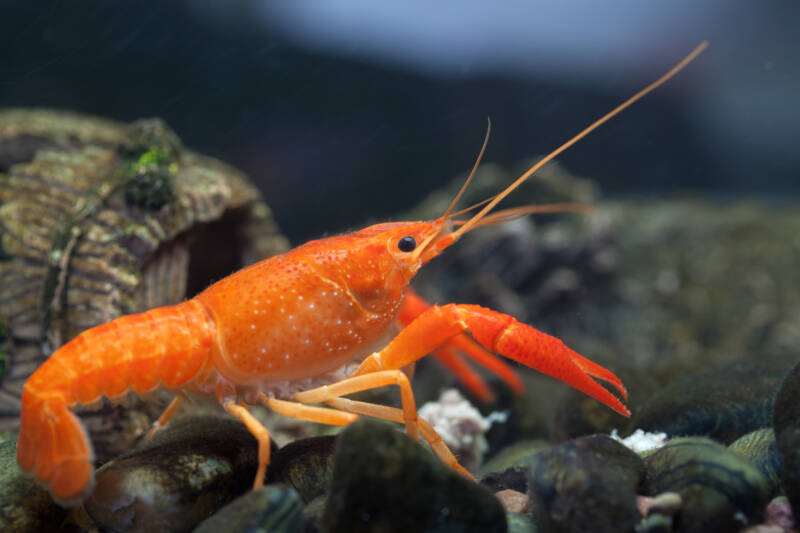
Some larger types of crayfish may tear apart your moss balls. Species of dwarf crayfish (such as the one pictured above) tend to just pick out bits of food that have become stuck to them.
Shrimp and Snails
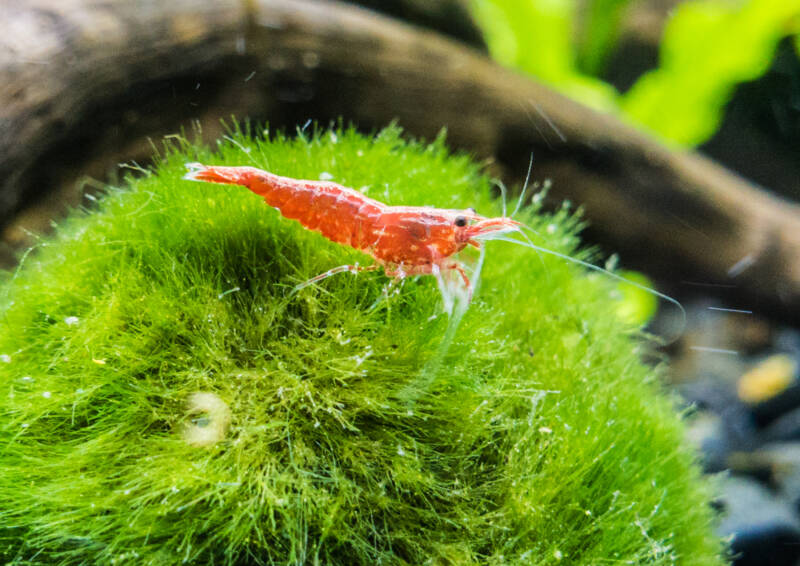
Live plants, mosses, and other algae are all highly beneficial in freshwater shrimp and snail tanks, and marimo balls are no exception!
They provide plenty of surface area for biofilm to form, and they collect small bits of food and debris, providing an excellent grazing area for invertebrates.
Other fish
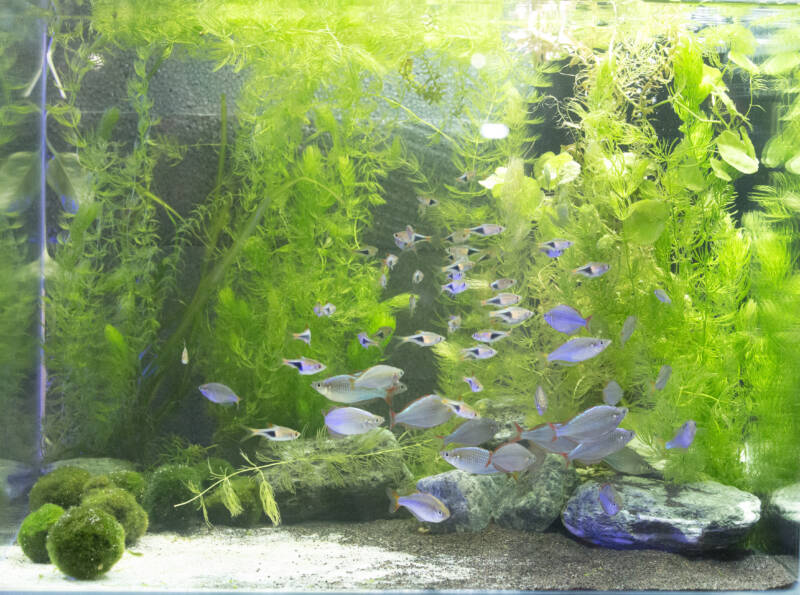
Marimo moss will do best in tanks when it’s left alone, aside from the occasional nudge or spin around the fish tank. This makes it ideal for fish tanks with non-aggressive freshwater fish.
What’s on my marimo moss ball?
Marimo moss balls pick up bits of debris and detritus as they grow or roll around on the bottom of their tanks, much as they would in freshwater lakes.
In fact, grains of sand are commonly found embedded in them. Sand doesn’t generally damage them, though, and can be easily rinsed off most of the time.
Just like aquarium plants, they can pick up hitchhiking pests, such as snails or eggs.
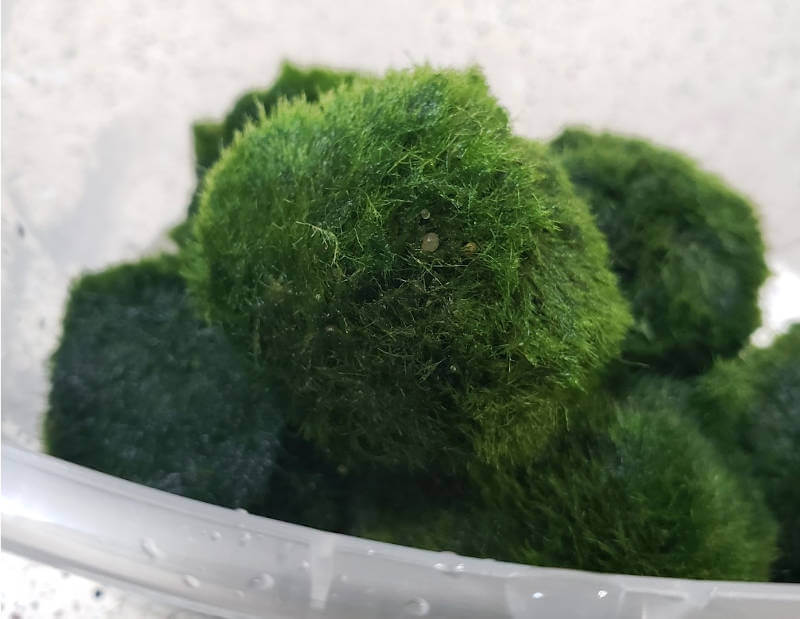
If you see anything you’re worried about, a quick bleach dip should kill any unwanted pests. Use a solution of 1 part bleach to 19 parts water and dip for 1-2 minutes. Remove your moss ball from the solution, then run it under cool water.
Lastly, place it in a bowl of clean water with a double dose of dechlorinator and let it soak for a few minutes. After this, it’s safe to add it back to the tank.
Why is my marimo moss floating?
Marimo balls perform photosynthesis, and one of the waste products of this process is oxygen. Sometimes you’ll see a tiny air bubble or two on your little ball of moss, which means it’s doing exactly what it’s supposed to do!
Oxygen trapped inside may cause it to float. The moss ball will sink again once the oxygen dissolves into the water or bubbles up to the top.
The other reason your marimo balls might float is that you’ve just put them in the tank. Air bubbles get trapped inside when they’re removed from the water.
They’ll sink eventually, but if you want them to sink right away you can give them a gentle squeeze underwater to release the excess oxygen.
How do I propagate my marimo moss balls?
Marimo balls’ growth rate may be slow, but increasing their number takes little effort. There are two main methods of propagation: splitting and pinching.
Splitting
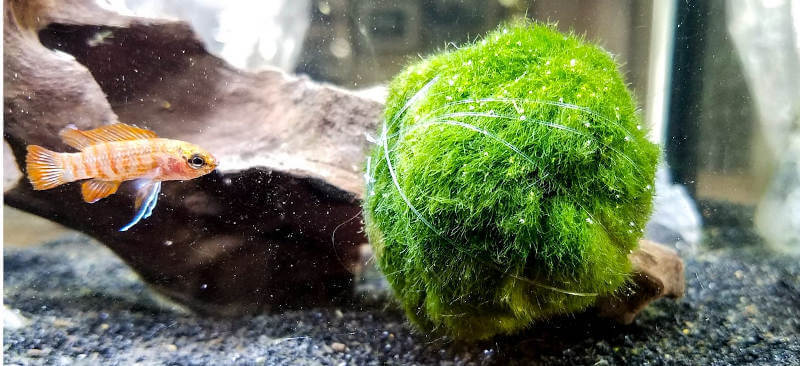
Because Aegagropila linnaei doesn’t develop a kernel and the marimo balls are the same on the inside as on the outside, you can safely split one in half to create two. I find it easiest to search for the weak points with my fingers and just split them apart by hand.
Cutting with knives or scissors will give you the same result (though you might have more fuzz fallout if you take this route). This doesn’t hurt the organism in any way, and you can roll each half in your hands to reshape them.
When you do a water change or wash your moss balls, give them a good re-roll as well. Because they’re slow growers, it might take a while for them to regain their rotund appearance, but diligently rerolling them should help!
If they are a particularly awkward shape, you can also wrap some fishing line around them to help them grow back into a ball.
Pinching
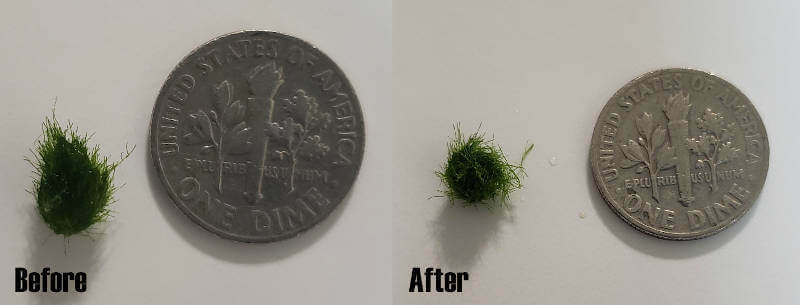
Sometimes this species of algae will give off little buds. You can easily pinch these off with your fingers.
Since these buds tend to be small (the one pictured above is exceptionally tiny!), you probably won’t be able to use thread or fishing line, so just reroll them and you’re good to go.
My marimo ball is falling apart, what do I do?
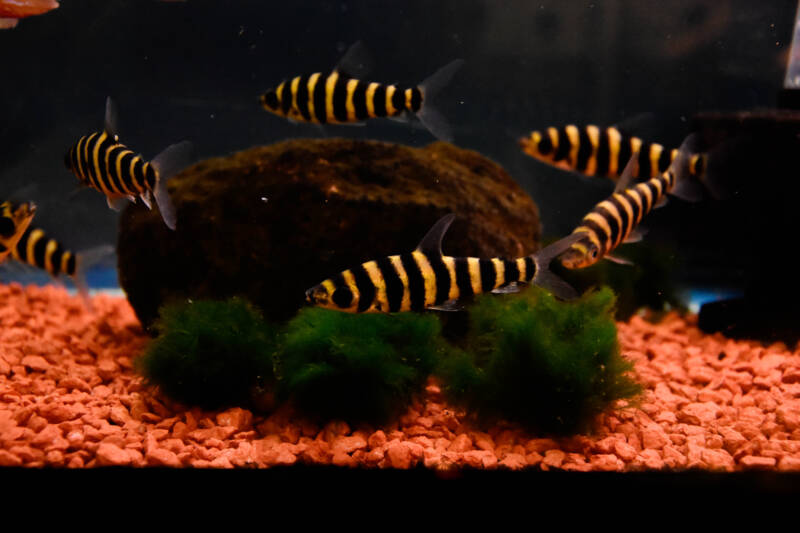
Sometimes marimos rot from the inside out, and you don’t know until they fall apart or split open. By then, it’s too late.
If this is the case, the best thing you can do is open it up (you should be able to pry it apart gently using your hands) and inspect the inside. If the inside smells or appears mushy or discolored, it’s best to remove all the unhealthy algae.
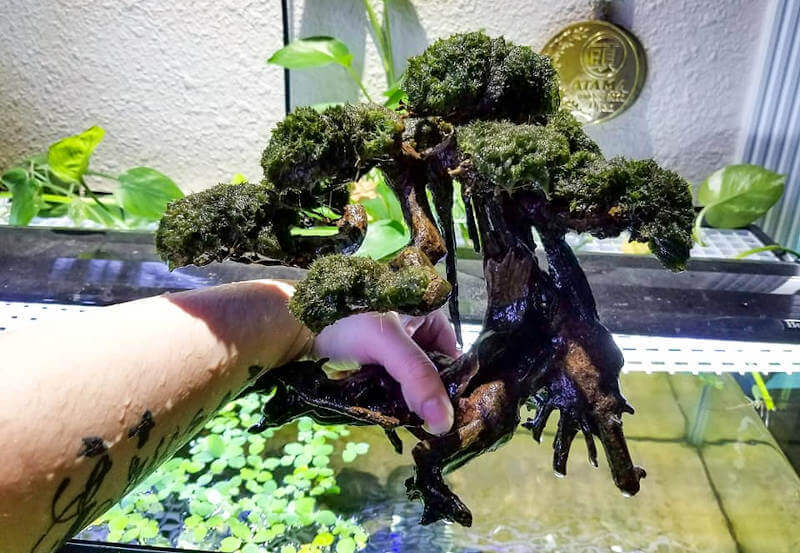
After you’ve removed all the yucky bits, you can re-roll the moss ball and sew it together with needle and thread or wrap some fishing line around it!
You can also leave it flat. In their natural habitat, marimos can grow in a few different forms, one of which is a mat that grows over rocks or on patches of the lake floor.
You can even tie it to some rocks or driftwood to create beautiful aquascaping pieces like the bonsai pictured above!
Final Thoughts
Marimo moss balls are a unique and low-maintenance addition to any aquarium. With proper care, they can thrive and add a touch of natural beauty to your tank. Stay informed about regulations and always purchase from reputable sources to ensure the health of your aquatic ecosystem.
Good luck and happy marimo-keeping!
If you have any questions or tips for other keepers, please feel free to leave a comment below!
